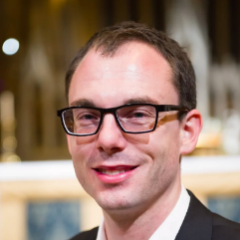
Oliver Brett
Mostrando 50 de 58 artículos
Toronto
21 jun 2017
A rousing Carmina burana in Toronto
Nueva York
20 ene 2017
Met hits the jackpot with revival of its Vegas Rigoletto
Nueva York
04 nov 2016
A direct and engaging Don Giovanni at the Met
Toronto
29 sep 2016
Toronto Symphony captivates with a fulfilling Mahler 3
Londres
07 ago 2016
An ecstatic conclusion to a trilogy of Scottish concerts
Londres
05 ago 2016
Prom 27: Finnish violinist Pekka Kuusisto delights with Tchaikovsky's Violin Concerto
Londres
01 ago 2016
Prom 23: Storgårds inspires with Nielsen's Fifth
Londres
29 jul 2016
Maturity and experience in Mahler's Third
Milán
07 abr 2016
Stanislav Kochanovsky brings Russian passion to LaVerdi
Milán
03 abr 2016
Jesting aside: La Scala revives Giordano's La cena delle beffe
Milán
01 abr 2016
LaVerdi and Xian Zhang usher spring into Milan
Milán
22 mar 2016
A poignant and thoughtful St John Passion in Milan
Sídney
14 jun 2013
Sydney Symphony play Stravinsky and Mendelssohn with Dutoit and Steinbacher
Sídney
07 jun 2013
Dutoit conducts Saint-Saëns and Frank Martin with Sydney Symphony
Sídney
17 may 2013
Tchaikovsky, Strauss and Walton: Ashkenazy's favourites with Sydney Symphony
Sídney
10 may 2013
Expertly crafted Beethoven by Ashkenzy and the Sydney Symphony Orchestra
Sídney
22 mar 2013
Opera Australia's Carmen lights up Sydney's harbour
Sídney
15 abr 2012
La Traviata performed by Opera Australia in Sydney Harbour
Sídney
15 mar 2013
Fate and festivals with the Sydney Symphony Orchestra
Sídney
07 mar 2013
Jazz trumpet meets the orchestra with the Sydney Symphony
Sídney
28 feb 2013
Opera Australia serve up a comically modern Orpheus in the Underworld in Sydney
Sídney
15 feb 2013
A Finnish Epic with the Sydney Symphony Orchestra
Sídney
08 feb 2013
Legends by the Sea with the Sydney Symphony Orchestra
Sídney
08 dic 2012
Totally Tchaikovsky with Garrick Ohlsson and the Sydney Symphony Orchestra
Sídney
01 dic 2012
The Sydney Symphony and a star cast perform The Queen of Spades
Sídney
23 nov 2012
Russian masters with the Sydney Symphony Orchestra
Sídney
17 nov 2012
Russian visions with the ACO in Sydney
Sídney
17 oct 2012
A world-class Madama Butterfly from Opera Australia
Sídney
09 dic 2011
An heroic evening from the Sydney Symphony Orchestra
Sídney
21 sep 2012
Mystery and motion with Angela Hewitt at Sydney Opera House
Sídney
07 sep 2012
Debussy, Takemitsu and Copland from Sydney Symphony and Spano
Sídney
22 ago 2012
A Romantic Symphony at Sydney Opera House
Sídney
10 ago 2012
Sydney Symphony perform Wagner under the sails
Adelaide
07 ago 2012
Thrilling Beethoven from the ACO and Clare College, Cambridge in Sydney
Sídney
01 ago 2012
Symphonic Dances from the Sydney Symphony at the Opera House
Sídney
18 jul 2012
Opera Australia pushes boundaries with Korngold's Die tote Stadt
Adelaide
17 jul 2012
Australian Chamber Orchestra soloists play music by Schubert and Messiaen
Sídney
09 jul 2012
Opera Australia's Pearl Fishers at Sydney Opera House
Sídney
06 jul 2012
David Robertson and the SSO provide an aural feast at the Sydney Opera House
Sídney
06 jun 2012
Majestic Brahms: Sydney Symphony perform Brahms and Shostakovich
Sídney
19 may 2012
A Gershwin Tribute at Sydney Opera House
Sídney
20 abr 2012
Tchaikovsky at the Ballet with the Sydney Symphony
Sídney
23 mar 2012
Fireworks and Fantasy from the Sydney Symphony
Sídney
20 mar 2012
Così fan tutte at Sydney Opera House
Canberra
17 mar 2012
The Hilliard Ensemble and the Australian Chamber Orchestra in Sydney
Sídney
28 feb 2012
Opera Australia: The Marriage of Figaro with a difference
Sídney
24 feb 2012
Thus Spake Zarathustra: A thrilling evening from the Sydney Symphony Orchestra
Sídney
17 feb 2012
Scaling the heights: Sydney Symphony play Beethoven and Strauss
Sídney
14 feb 2012
The power of love: Opera Australia's Turandot
Sídney
10 feb 2012
Beethoven's triumphant spirit shines through with the Sydney Symphony Orchestra

